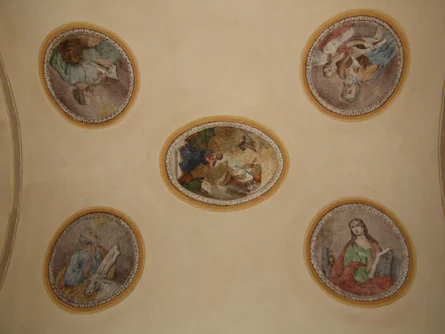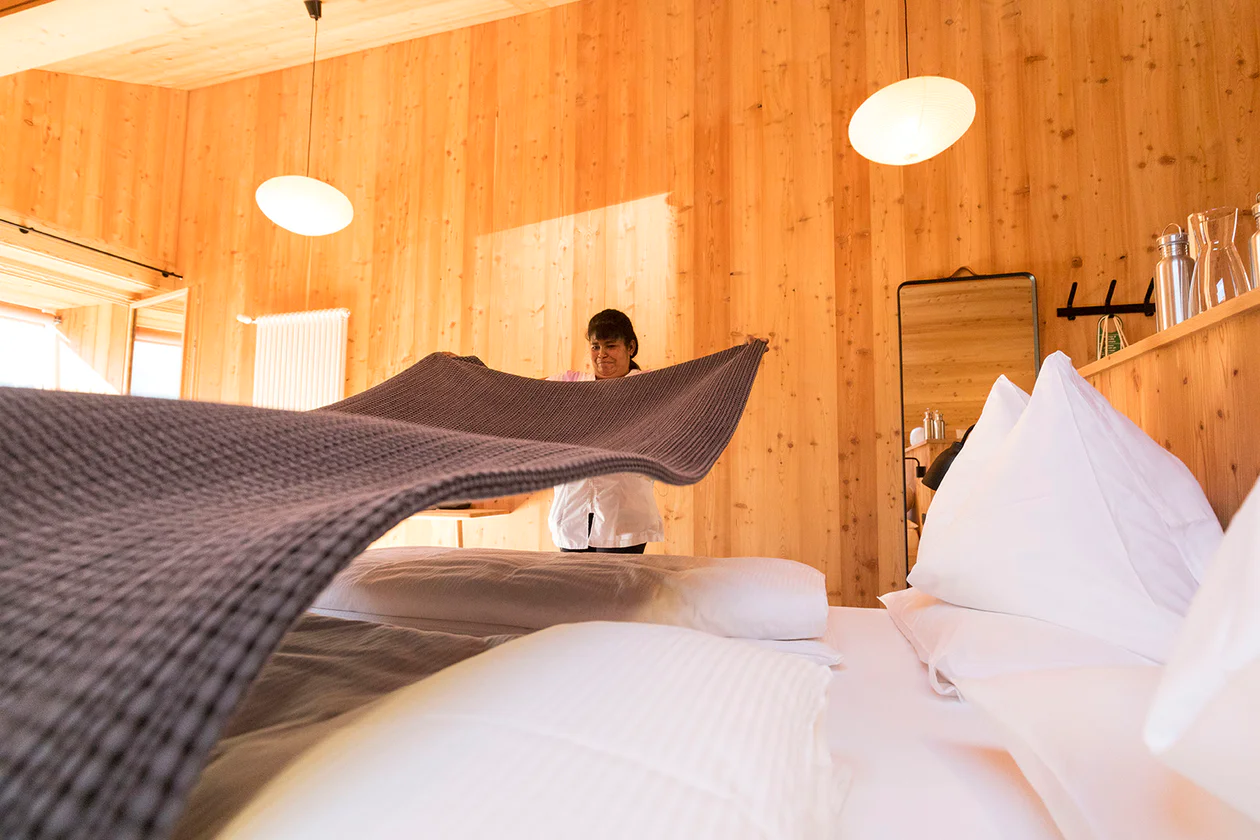Lourdes chapel at Egna. The construction of the little Marian Chapel is attributed to the will of the parish priest, Johann Giuliani who, at the end of the 19th century, wanted it to complete the “Institute for the Protection of Children”, which he had founded. Inside the chapel, there is a reproduction of the grotto in Lourdes made of tufa rock from the Trodena Creek; the statues of the Madonna and Bernadette adorn the interior of the grotto. The ceiling is decorated with five medallions representing the four evangelists with their insignia and, at the center, the Annunciation. The chapel is still part of the foundation “Asilo infantile di Egna” (Egna kindergarten). In 2014, it was restored at the hands of a local restorer, Lucia Giacomozzi.































































